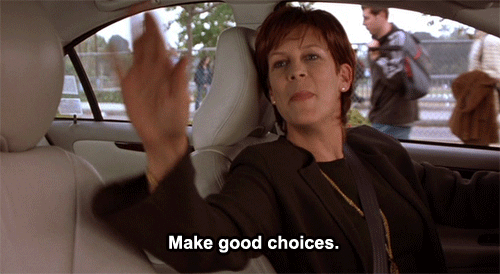When a mentor of mine first encouraged me to blog about my journey to finding spirituality, I tried to look for reasons to say no. Not only because it had been so long since I had written, but also because I was worried that I wasn’t going to have the time to do these big spiritual activities let alone write about them. I had imagined that the stops along this spiritual path were all going to be huge, time consuming endeavors. It’s so funny to me now how so much of what I was doing was being motivated by saving time (and yes, fear). Nevertheless, I decided to consider it, and did what I did best at the time – made a to-do list, detailing exactly when and how I was going to approach each of these activities. Yes, I made a to-do list of how I was going to find spirituality. ::facepalm::
The things on my list were “big,” meaning time consuming and expensive. I knew a routine like this wasn’t sustainable, but I was so excited and curious about what I might find, that I started off aggressively. Having already whizzed through the first half of my list, I’ve been pleasantly surprised that often the biggest change has come from the small things. The really doable things that I’d been putting off because I didn’t believe something so easy could have such a profound impact.
Before I jump into the power I’ve found in small changes, let’s talk about a “big thing,” because let’s be honest they are super fun and interesting. A Psychic Reading was always something I wanted to try, but had allowed fear to stop me. Fear told me that a psychic may predict something horrible and out of my control. Fear also asked me what would happen if I started to truly believe in this metaphysical stuff? I’ve always felt a deep sense of intuition, but haven’t listened to it. Maybe I was scared to think about what might change in my life if I became a true believer. This time around, curiosity swooped in to save the day…what’s the best that could happen? I set boundaries with myself that for this first reading I would take everything with a grain of salt, and not make it such a big deal. It was a really cool feeling because I was walking into something completely new with pure excitement instead of my usual intense nerves.
I had no idea what to expect, but the psychic was warm and unintimidating, while confident and matter of fact. We started with an astrological reading based on my birthday, and then she pulled out a deck of tarot cards to “see what was coming up” for my family, me, and my business. A lot of what she said resonated, but most importantly brought me into a state of presence and self-reflection.
Some of the concepts she brought up were so specific and spot on that it made me start to trust that everything is more connected than I once thought. I shed some tears when she brought up some things that I too had been feeling so strongly in my gut, but didn’t have the confidence to know for sure. I still don’t know if you can ever know for sure, but it felt good to know that somebody else (and an objective source) felt it too.
When she provided some less specific information, I liked that I could interpret it how I wanted. It brought me closer to self-awareness, and acted as a prompt to get me thinking about some things that were sitting just below the surface. I took the information and used it to coach myself and reflect on what her words meant to me. I left feeling excited, filled with wonder, and proud that I tried something new.
A major takeaway for me though, is that this “big experience” wasn’t the only answer that was going to get me to the peace, calm, connection, and presence I’m looking for. I don’t think any one thing can do that. It was a valuable and fun way to complement my spiritual practice, but the biggest gift on this journey so far has been what I’ve received from making the smallest changes.
It feels a little underwhelming to say, but the most impactful way I’ve uncovered my authentic spirituality is through reading and writing. I know, snore, but daily journaling has been the key to bringing me closer to an authentic and lasting state of gratitude.
If you read the last post you know that I like to journal about how I got over my BS yesterday, or how I’m going to get over it today. I have also found another tool I’m using to help me understand my place in the universe as a whole, and to inspire my journaling practice. It’s called “The Book of Awakening,” by Mark Nepo.
I was introduced to this book by a fellow life coaching trainee. She started each day by reading one page from this book of daily devotionals and profound messages. In my desperation to find a spiritual ritual, I copied this practice from her. Real original, right? But, the thing about spiritual practices is that if they are truly authentic to you, they’ll wind up in your hands one way or another. I no longer look at it as being unoriginal, but rather as the universe putting me right where I was meant to be to discover a practice that has become so meaningful to me.
Here’s an excerpt that spoke to me, particularly as it pertains to this journey, “When we find our spirit on the move when we are pretending otherwise, the tension can be ripping. It leaves us all with the need to learn how to discern between an innocent not-knowing and a willful looking away. This is an inner knowing that can determine whether we will live like a dog at the end of our leash or whether we will run free through the grasses of life.”
The presence that has come from this new daily routine has at times suggested, and other times slapped me in the face with new truths.
One thing I know to be true is that I want to run free through the grasses of life.
I don’t know why I was so apprehensive about getting back into journaling. Maybe because it made me feel like an emo teenager, or maybe because I didn’t think it was deserving of my precious time. I couldn’t have been more wrong! Committing the time to explore my being through journaling, has been an empowering experience that has actually made me more productive.
A beautiful side effect of journaling has been that it has kept my gratitude list top of mind. Not only does this gratitude put things into perspective, but it has physically helped me relax and feel lighter. There’s actual science behind this that says when you think about what you’re grateful for, your brain releases dopamine and serotonin (the feel good neurotransmitters), and the more often you do this, the stronger these feel good neural pathways become, creating a more permanent positive nature. I remember having read that at some point but haven’t actually experienced it until now.
I am now relishing in little things and messages I may have previously raced right by without second thought. These little things now trigger waves of gratitude as I go about my day. It may sound crazy, but I don’t really care because even if it is, it sure feels good.
I feel compelled to note that as much as I’d like to walk around like Buddha all the time, I am human and it’s not always all bliss. The past few days have really tested me, and I didn’t always like the way I reacted to things. The good news is that I now know what tools to use to get me back to being grounded versus continuing to spin out of balance.
It’s hard to put into words the way this “grounding” feels. I’m going to share with you a note from my daily journal that brings to life the gift that this spiritual journey has given me versus trying to rewrite it into some beautiful prose. Here goes:
From Clara’s journal, February 12th: “It’s Tuesday, and I’m writing out an overwhelming to do list. Both kids are still sick, it’s raining outside, and I am dragging ass. In the midst of writing my to do list, I get to item #9, and when I normally would begin to panic, I felt a wave of gratitude. I can’t really explain it other than my chest feeling filled with light and love, and a smile came to my face. Maybe because with a shift in mindset, more gratitude, and a feeling of connection to something bigger, my to do list doesn’t seem like such a daunting task anymore, but rather a collection of all the wonderful things that make up my life.”
Today I tried something new. I only put one thing on my to-do list: Flow.


